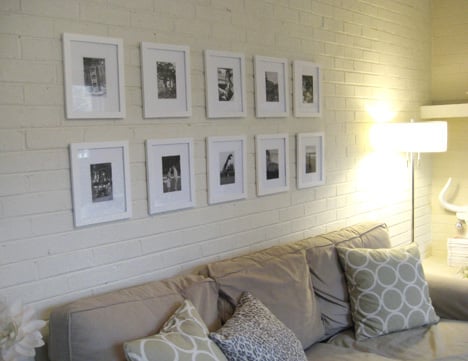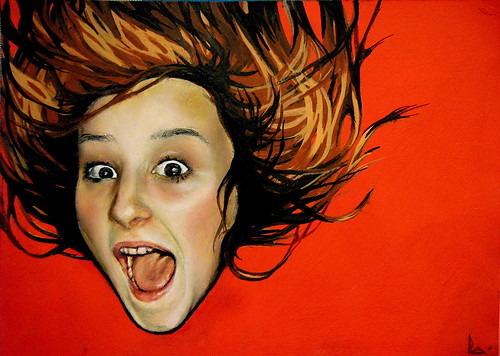
Join or Die Oil Paintings by Justine Lai
Tuesday, April 6, 2010

Wild Animal in The Jungle Oil Painting
Saturday, March 20, 2010
Topart co. Ltd. Is manufacturer and exporter of both oil Paintings on canvas by letterman / board in various styles or subjects in museum quality, high-quality, medium quality and commercial quality at competitive prices. We have a studio and factory. Our company found in 1995, we have more than 3000 artists, who can paint every kind of subject. Our products are widely accepted among European and American markets.
Out Open Windows - Oil on canvas by Jude Gribel
Friday, March 19, 2010
 Here is Out Open Windows - Oil Paintings on canvas by letterman ( Jude Gribel )
Here is Out Open Windows - Oil Paintings on canvas by letterman ( Jude Gribel )Out Open Windows
oil on canvas
60 x 48 in.
$4500
available at Bau-Xi, Vancouver
Watercolor Masterpieces Painting from the Brooklyn Museum
Sunday, February 28, 2010

The recently opened exhibition features 70 stellar watercolors painting artwork from the Brooklyn Museum’s collection, chronicling the rise of the medium in America and shifts in technique over the years. The Brooklyn Museum was the first American art museum to start collecting watercolors,
Arts of Painting - Exploring the Artist Identity
Saturday, February 27, 2010
The painting processes in this research endeavour to study the artist identity of the artist through the exploration of consciousness. The basic components of what; where, when; how and why they take place will be described in the following applications, which form a personal account.
These processes have been chosen instead of other media because of the quality of paint's immediate and fluid response. Despite a background in ceramics, art paintings is where my passion lies.
Processes
What the Art Paintings Will Comprise
In my exploration, six art paintings will be undertaken. These will be abstract art paintings and figurative paintings. I will use alternative surfaces. The paintings will include canvases stretched professionally with concrete underlay (thick black plastic).
The dimensions of each art painting will be uniform: 120 x 70x 5 cm. The media used will include oil paint, enamel, oil sticks, Black Japan stain, shellac, pastel, charcoal and ink. The primary artistic focus in this process will lie in the use of alternative materials in painting and in the use of alternative surfaces. Boundaries may be intentionally pushed through the use of construction materials to create aesthetics on surfaces not intended for this purpose.
When the Painting Will Take Place
The proposed plan involves painting every second Tuesday and every Thursday for a period of six weeks. This art painting will occur at night in two to three hourly timeslots.
Where They Will Take Place
The space will consist of a studio set-up in a lock-up garage. For the purposes of the research, the computer and reference materials will be set up on one side of a garage space, and the work bench with art painting materials on the other. I plan to be able to move quickly and freely between both.
How They Will Occur
The intention is to include a timetable of art painting processes, which will consist of certain times in the following months. Ideas of setting a limit on the painting time have been considered.
Dialogue with Art Paintings
The personal dialogue processes approached in this research combine elements of Heuristic research, but allow for an individual account.
These processes are based on the internal search mechanisms present within the creative-self processes The processes relate to a conversation or dialogue that takes place between the researcher, artist and a higher consciousness of either the self, an artwork or other object studied closely. Many artists and art therapists have utilized these methods in their research and inquiry.
Why the Dialogue Will be Undertaken in This Manner
The dialogue process is intended to provide a different level of consciousness. It is anticipated that I will connect with my art paintings through the processes of dialogue. The dialogue may inform me on levels unavailable to me experientially.
What the Dialogue Will Comprise
This process is intended to encompass a journey into art painting. The aim is to literally enter into the art paintings through passages of different levels of consciousness. In order to make the space available to connect with these other levels of consciousness, the following will be utilized: indwelling; a search of the self through thought; meditation and contemplation. The insights may come through hearing the words in my mind, intuition, or new concepts emerging from or into internal frames of reference.
Where the Dialogue Will Take Place
This process is an internal one, while the external and inter-objective realities in my surroundings may have bearing on the internal mechanisms. The proposed dialogue will occur in the studio space designated for writing this research. The set-up of the computer on one side and the art paintings on the other is intentionally designed towards easy access to writing when dialogue occurs. When the Dialogue Will Take Place
When the Dialogue Will Take Place
The method of dialogue within this research will be approached using a lack of structured timetable or schedule. As I have not attempted this process before, I am unsure of whether it will be able to fit into a time-frame. I am unsure of whether I can summon dialogue at will; or whether it will emerge in an indiscriminate manner.
How the Dialogue Will Occur
This is largely unable to be determined at this point in time. There is a commitment to a total immersion in the processes of this inquiry and it is likely that the dialogue will naturally emerge from the art paintings through channels due to the immersion process. It is anticipated that the creation of the unique personal space for communication with my art paintings will reveal and allow for documentation of how the process occurs.
Reflection on Art Paintings
Why the Reflection Will be Undertaken in This Manner
The reflection process formulates the basis for the intimate connectivity of the processes of art paintings and dialogue. It forms the fabric from which the evaluation cloth is cut. The sacred witness will allow the space and time to measure the experience and to dwell on the emergence of new information.
The reflection process aims to draw the art paintings and dialogue processes together and provide the stand-back viewpoint, indispensable to making art paintings and primordial self- inquiry.
What the Reflection Will Comprise
The reflection process in this research will comprise transpersonal processes as a method of self-inquiry. It will evoke notions of the witness. These reflection processes will present a unique witness account of the experience of art painting, the dialogue experience and the overall experiences.
The observations of thoughts, emotions, dreams, dialogue and art painting processes provide the foundation from which to evaluate the personal interior experience.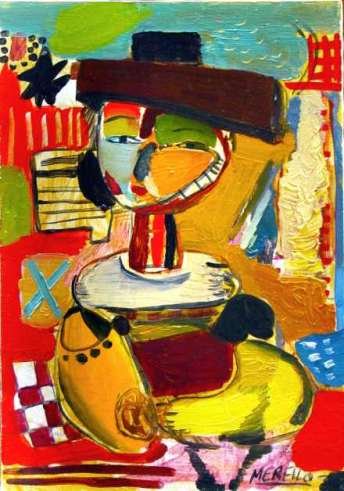 Where the Reflection Will Take Place
Where the Reflection Will Take Place
The reflection is anticipated to take place within the transpersonal self -this being wherever the art paintings and dialogue processes are taking place. They may take place in other areas of life, such as times of driving, walking, meditating and working.
When the Reflection Will Take Place
Much like the whereabouts of the reflection processes, the time-frame of this process encompasses all other processes in this research. It is predictable that I will bear witness to my art paintings and my dialogue processes. The witness will be present when I make the connective leaps in consciousness and when the intellectual synapses jump into action. Thus, the internal observer will have to be on duty at all times, knitting the components of my processes together. These observations can then be evaluated into a unified and presentable critique.
How the Reflection Will Occur
The reflection processes aim to transcend the art paintings and dialogue states of consciousness. Reflection is anticipated to occur through the watchful gaze of the transpersonal witness. I will endeavour to consciously manifest the witness during times of art painting and dialogue. This will involve dis-identifying with the art paintings and dialogue processes.
Findings of the Exploration Into the Artist Identity
The basic components of why, what, where, when and how investigated in the art paintings and dialogue and reflection applications can be located in the art paintings themselves and in some of the text and explanation of each of the art paintings on the website.
Oil on Canvas Racing Car Painting Galleries
Friday, February 26, 2010


 "Olivier's Twist"
"Olivier's Twist"Oliver Panis and the Toyata 2003 challenger showed shades of brillance at times and at other it was down right dismal, but it proved to be beautiful to look at. The future is bright for this 2nd year team. Limted Edition Print of original oil painting on canvas. Limited to 300 pieces. Each comes hand signed and numbered by artist.

 “Marco”
“Marco” “Marco” Werner / JJ Letho / Emanuele Pirro started 6th in the 2004 24 hours of Le Mans, but managed to move up to 3rd.
Limited to 368 pieces the number of laps completed in 2004 24hr of Le Mans. Each comes hand signed and numbered by artist.

 “The Lion”
“The Lion”“The Lion” is my tribute to the fan favorite Nigel Mansell. Limited to 187 peices the number of F1 races he competed in. Limited Edition Print of original oil painting on canvas. Limited to 187 pieces. Each comes hand signed and numbered by artist .
 "Jacques"
"Jacques" The 2005 Sauber C24 Chassis wasnt the best of show, but in the hands of Jacques it was fast. Limited Edition Print of original oil painting on canvas. Limited to 100 pieces. Each comes hand signed and numbered by artist .
Buy Online Direct From the Artists - Affordable Art Paintings and Prints

There are many self-representing artists who sell original paintings, limited edition prints,
 Another good reason for buying art direct from the artist is that you could discover the next Picasso or Turner! You may get to chat with the creators themselves, by purchasing art from an emerging artist you could buy art that has a good chance of being an investment if the artist reaches greater heights in their artistic career, or just choose your art because you like it and it compliments the interior of your home or office space.
Another good reason for buying art direct from the artist is that you could discover the next Picasso or Turner! You may get to chat with the creators themselves, by purchasing art from an emerging artist you could buy art that has a good chance of being an investment if the artist reaches greater heights in their artistic career, or just choose your art because you like it and it compliments the interior of your home or office space.
Online art galleries represent all artists, from amateurs to new or emerging and full time professionals, who exhibit a wide variety of art in all styles and mediums, including abstract paintings, landscapes, seascapes, figurative art, still life, flowers, wildlife paintings, and more, in oils, acrylic, watercolour and other mediums, each artist has their own pages on these art sites where they exhibit a portfolio of their art, you can send enquiries or leave feedback when you have made a purchase, some galleries charge their artists an annual fee but take no commission, some work on a commission basis where artists pay a percentage usually 25 - 50% on each artwork sold.
 You can buy some stunning art online, or you could also do a search in your local area, find an artist and visit them in their studio where they will have paintings on display for you to see before you buy.
You can buy some stunning art online, or you could also do a search in your local area, find an artist and visit them in their studio where they will have paintings on display for you to see before you buy.
If you are looking for a painting or print to complete the look of your home or office, buy art direct from the artist, save money and help support and encourage talented artists.
Black and White Art on The Wall - Adds Drama and Sophistication
The dining room had walls the color of terracotta pots and a classic Greek keystone pattern ran around the bottom of glossy black crown molding. The wall had at least a dozen black and white photos of architectural details. Obviously I was impressed. Any moment Humphrey Bogart and Lauren Bacall could have walked through the door!
You might not be ready for something this dramatic. However the look of black and white art on a wall can make a highly sophisticated statement. When you are shopping for black and white images, keep in mind the main elements that viewers notice are line and mass.
The size of the image will determine the level of intrigue that the viewer experiences. For example, a series of small images will invite closer inspection and a single large image will increase the power of the subject.
A few suggestions for finishing your black and white artwork:
- Look for mats in subtle shades from beige to rose.
- Try double mats with a narrow liner of a bright color such as scarlet.
- Try mats with colored edges that are less expensive than double mats.
- Matt black frames won’t overpower the image as would a gloss finish or gold frame.
- A white frame can create a totally different look for the image
- Remember that you are about to invite drama into your home – If you see Bogie or Bacall don’t be surprised.
Mystical Abstract Art - Paintings
The world of art and the environment of the mystical go back a long way together with many facets in common with one another - one being that they both seek to look into a deep unknown - and then seek to manifest it into this physical world by one means or another.
However, as an artist who has acquired (and lives by) a little understanding of certain spiritual aspects, here are my offerings of what I believe happens when a viewer comes across a mystical abstract painting.
The Spirit
One of the Spirit's major intentions is to bring spiritual understanding into the physical realm. One way to do that is to enter time and manifest a potential opportunity for a receptive body. That receptive body can either be the person being offered the opportunity - or the messenger of it.
The Messenger
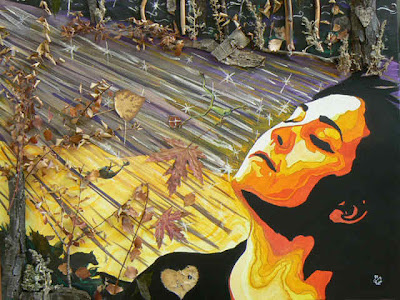 Or Artist in this case, Or more specifically an artist who is prone to take note of their own inner enigmatic visuals. Once inspired the artist then sets about translating these visions into a personal style of depiction. I think it is quite probable that many an artist will be unconscious of what exactly they are putting down upon the canvas ... all they might know is that there is an urgent compulsion to work with particular colours, or in a specific style.
Or Artist in this case, Or more specifically an artist who is prone to take note of their own inner enigmatic visuals. Once inspired the artist then sets about translating these visions into a personal style of depiction. I think it is quite probable that many an artist will be unconscious of what exactly they are putting down upon the canvas ... all they might know is that there is an urgent compulsion to work with particular colours, or in a specific style.
The Art
A personalized manifestation of the inner visuals ... portrayed on board or canvas - or any other handy appropriate medium at the time. The artist lets the visual take shape in their mind and allows for interpretation into the physical world ... which results in an artwork of surreal allegory, or be-riddled story, or just a simple abstract presentation of specific colours or shapes. Each element of the art will include (or be) a potential key ready to allow the appropriate viewer entrance into its intriguing yet creative environment.
The Viewer
A receptive observer viewing the art may initially have an indefinable affinity with it. They are perhaps first emotionally drawn to the image before them. And as their thoughts begin to trigger other thoughts, gradual realizations start to become apparent ... gaining strength until they acquire a personal creative understanding seen only by themselves but which may eventually involve others who come into contact with them.
The Gift
 The originally unknown vision now begins to unfold its truth within the receptive viewer. This can be in many guises, a simple affirmation, a personal revelation , a specific spiritual, mental, or inner encouragement, an energizing edification for a hungry or floundering soul, offering a sense of contentment within a challenging situation, This gift can be as simple or as complicated as is required for the viewer. Its influence can be timeless - remaining relevant over a period of days, weeks, months, or years.
The originally unknown vision now begins to unfold its truth within the receptive viewer. This can be in many guises, a simple affirmation, a personal revelation , a specific spiritual, mental, or inner encouragement, an energizing edification for a hungry or floundering soul, offering a sense of contentment within a challenging situation, This gift can be as simple or as complicated as is required for the viewer. Its influence can be timeless - remaining relevant over a period of days, weeks, months, or years.
So the next time you seek to produce a piece of art or decide to visit a gallery do not hesitate or dwell upon any lack within you, rather open your eyes (after all they are supposed to be the windows of the body) and prepare yourself to either see in order to create - or see in order to receive.
Charity and Her Children - Nursing Mothers Painting
Friday, February 19, 2010
 More Information:
More Information:Picasso - Father of Modern Art
Wednesday, February 17, 2010
 Modern art, incorporates canvas art, sculpture, print, and all the other new forms of twentieth century art. Scholars and historians rarely agree, as to the exact point when modern art began. Therefore, the term generally refers to all art, produced in America and Europe, during the nineteen hundreds. In addition to a hand full of other countries, which were primarily influenced by the West. This was a time when Artists were introducing new materials, new techniques and new concepts.
Modern art, incorporates canvas art, sculpture, print, and all the other new forms of twentieth century art. Scholars and historians rarely agree, as to the exact point when modern art began. Therefore, the term generally refers to all art, produced in America and Europe, during the nineteen hundreds. In addition to a hand full of other countries, which were primarily influenced by the West. This was a time when Artists were introducing new materials, new techniques and new concepts.Pablo Picasso was born in Malaga, mainland Spain. Pablo Picasso was a child prodigy, by the age of fourteen his technical skill was incredible. In 1895, his father became an art teacher at the Academy of Fine Art in La Coruña. Picasso was entered into the advanced classes quickly. He completed the entrance exam, which took most at least a month, in one day. Two years later, he began to study at the Madrid Academy. Picasso left soon after, dissatisfied, and returned home. Between 1900 and 1904, Picasso shifted between Paris and La Coruña. After four years of moving back and forth, Picasso finally made his home in Paris. This would be where he would live and work for most of his life.
From 1904, Picasso encountered many different art forms, showing great interest in the style of Henri Toulouse and African Art. Since his first visit to Paris, Picasso loved to paint the Parisian nightlife and café scenes, which generally, included a menagerie of circus performers and social outcasts. Some feel that Picasso was displaying empathy with the entertainers and outcasts he portrayed, like the Clown. The Clown is recognized inside the Big Ring, yet falls into obscurity, the second he removes his Clown face. Society pays the Clown to be entertained. Nobody is particularly interested in his real face, or feelings. Before Artists broke free of those Artistic restrictions, which had previously bound them, there was little difference between the Clown, and the Artist.
 Towards the end of 1905, Picasso's work passed through many rapid changes in style. There was a notable withdraw from emotional content. The melancholy thoughts of the outcast, was replaced by reason. Picasso began to study early century sculpture from the Iberian peninsula. His fascination with Iberian sculpture reflected his increased interest in simplified, geometric forms. Picasso's had a preference for experimentation. He also had a keen interest in Art, which lay outside the realms of the establishment. By 1907 he had produced one of the most revolutionary oil paintings of the twentieth century; Les Demoiselles d'Avignon. The influence of both his native Iberian sculpture, and African Art is paramount in this work. The painting is greatly simplified, with oval forms, the faces and figures of this painting are incongruent. This piece was extremely adventurous for 1907.
Towards the end of 1905, Picasso's work passed through many rapid changes in style. There was a notable withdraw from emotional content. The melancholy thoughts of the outcast, was replaced by reason. Picasso began to study early century sculpture from the Iberian peninsula. His fascination with Iberian sculpture reflected his increased interest in simplified, geometric forms. Picasso's had a preference for experimentation. He also had a keen interest in Art, which lay outside the realms of the establishment. By 1907 he had produced one of the most revolutionary oil paintings of the twentieth century; Les Demoiselles d'Avignon. The influence of both his native Iberian sculpture, and African Art is paramount in this work. The painting is greatly simplified, with oval forms, the faces and figures of this painting are incongruent. This piece was extremely adventurous for 1907.
The incongruities of Les Demoiselles d'Avignon proved too much for many of Picasso's contemporaries. Matisse is even believed to have accused Picasso of ridiculing the new, modern art movement. Curiously, today, many art historians and scholars regard this piece as the beginning of Cubism. The year of 1907 is also known to many as Picasso's African period. At first, Picasso rebuked the analogy of his work with African Art. However, later, he agreed that African Art had been greatly influential upon him, and his work. While some scholars believe that African Art was the primary catalyst for this rapid and drastic change in form and style, others believe it was Cézanne who provided this catalyst.
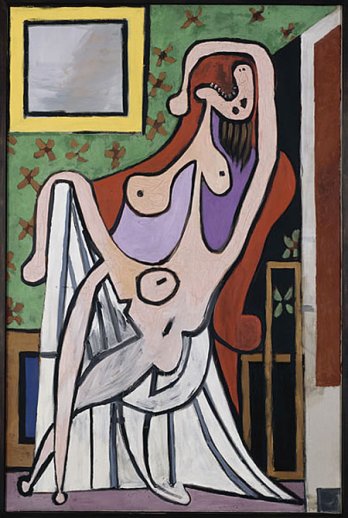 From 1907, until around 1917, Pablo Picasso and Georges Braque developed and experimented with their new art concept, dubbed by the critics as Cubism. Most art historians and scholars will usually split that development into two dynamic stages. The first stage is referred to as Analytical Cubism. This describes the method of dissecting three dimensional forms, depicting them as multiple geometric planes. Synthetic Cubism sought to achieve the opposite. Instead of dissecting the form, they would create it using geometric planes. Picasso worked much, throughout his life, with the human figure and still life. Even today, we continue to analyze and enjoy his work. Without doubt, he was one of the most influential and innovative artists, of twentieth century modern art.
From 1907, until around 1917, Pablo Picasso and Georges Braque developed and experimented with their new art concept, dubbed by the critics as Cubism. Most art historians and scholars will usually split that development into two dynamic stages. The first stage is referred to as Analytical Cubism. This describes the method of dissecting three dimensional forms, depicting them as multiple geometric planes. Synthetic Cubism sought to achieve the opposite. Instead of dissecting the form, they would create it using geometric planes. Picasso worked much, throughout his life, with the human figure and still life. Even today, we continue to analyze and enjoy his work. Without doubt, he was one of the most influential and innovative artists, of twentieth century modern art.
Woman Face Expression Oil Painting
 I think this is a nice one of Oil Painting, Woman Face Expression Oil Painting. An oil painting is an expression on canvas that can reflect many things, from real life to abstract, and it one of the greatest gift ideas. Painting in oil is an almost lost art medium in the burgeoning digital age. Contrary to popular belief, painting in oil does not require that the artist to be a professional.
I think this is a nice one of Oil Painting, Woman Face Expression Oil Painting. An oil painting is an expression on canvas that can reflect many things, from real life to abstract, and it one of the greatest gift ideas. Painting in oil is an almost lost art medium in the burgeoning digital age. Contrary to popular belief, painting in oil does not require that the artist to be a professional.Shades of Violet - Woman Expression Oil Painting
 "Violet" Woman Expression Oil Painting by Pino. One of my beautiful oil paintings, I love the skin tones, and expression on the face. To see more oil paintings, please click here oil paintings
"Violet" Woman Expression Oil Painting by Pino. One of my beautiful oil paintings, I love the skin tones, and expression on the face. To see more oil paintings, please click here oil paintingsMiniature Painting - Art In Miniature
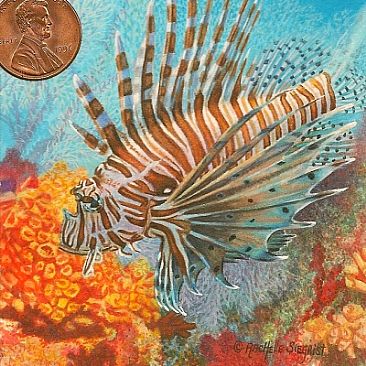 Summarized briefly, miniature painting is a form of painting that is deeply rooted in many cultures and spans centuries. The Lathams are a family of American artists practicing it in today's modern art market of galleries and exhibitions. As an artist, Rebecca Latham as well as her mother, Karen, and sister, Bonnie, strive for detail in their painting. Studying with a Flemish master, they have developed their styles for painting extreme realism. Their works, both large and small, are painted "in miniature".
Summarized briefly, miniature painting is a form of painting that is deeply rooted in many cultures and spans centuries. The Lathams are a family of American artists practicing it in today's modern art market of galleries and exhibitions. As an artist, Rebecca Latham as well as her mother, Karen, and sister, Bonnie, strive for detail in their painting. Studying with a Flemish master, they have developed their styles for painting extreme realism. Their works, both large and small, are painted "in miniature".Early Beginnings
Miniature painting is a traditional style of art that is very detailed, often referred to as painting or working "in miniature". Because of their origins as illuminations, they are also painted to have as smooth of a surface as possible.
Miniature painting began out of necessity for illustrating documents and manuscripts to aid those reading them during a time when many were not able to, before printing was invented. The miniature helped to convey the story and meaning of the written word. Therefore, the art of the miniature is directly connected to the book arts. The various sized illuminations (pictures) were cut out of these books or documents so that they could be carried more easily. Later, developing from the carried miniature, portrait miniature artists were commissioned to paint small portraits - paintings that were used as we use wallet sized photographs today. These sizes of miniature paintings became popular with collectors and are often referred to as "hand held miniatures". Portrait miniatures were painted in larger sizes as well, for example master miniaturist, Nicholas Hilliard, Peter Oliver, and Sir Charles William Ross all painted works that were of a larger size.
Sizes
 Miniature painting is sometimes confused and assumed that the pieces must be small or depict subjects on a smaller scale to be considered miniature art, though this is not the case. It is helpful to keep in mind that the origins of the term "miniature" have nothing to do with a size. The word miniature comes from the terms 'minium' (used for the red lead paint used in illuminated manuscripts) and 'miniare' (Latin for 'to color with red lead').
Miniature painting is sometimes confused and assumed that the pieces must be small or depict subjects on a smaller scale to be considered miniature art, though this is not the case. It is helpful to keep in mind that the origins of the term "miniature" have nothing to do with a size. The word miniature comes from the terms 'minium' (used for the red lead paint used in illuminated manuscripts) and 'miniare' (Latin for 'to color with red lead').
Miniature painting is a style and technique of painting, and as such, a wall sized work could be painted "in miniature". Authors of the Yale University Press publication, "The English Miniature" have stated that miniatures have been painted large and some works are even considered to be gigantic. Numerous faculty members of the Victoria & Albert Museum in London confirm that miniature paintings are not restricted to smallness. Larger sized miniature paintings are documented throughout history and are recognized today, though painting larger works in miniature is more difficult and time consuming than a smaller piece if the same attention to detail is observed. Miniature art is also unique in that it was and is often used on objects, such as the Russian lacquer boxes that are beautiful examples of Russian miniatures.
Exhibitions
Today, there are miniature art societies in western society to help promote and preserve traditional miniature art and the "spirit of miniature". Their exhibitions feature the hand held miniature paintings (or sculptures) and each exhibition has its own unique guidelines and rules for artists showing in their exhibit. Some of these rules limit the size of work to be no larger than a set square inch. Others limit the size of a subject, such at the 1/6th scale rule that a subject may not be painted larger than 1/6th of it's natural size, or the 2" rule, that an object in the painting may not exceed 2". Scale rules were initially put in place as a guide for artists starting out in miniature art. There are also many framing restrictions for society miniature works as well. All of these rules are put into place by each show for their own individual and unique exhibitions, and do not define what miniature art is.
 Artists painting miniatures throughout history were not restricted in their artwork by scale as their subjects were painted to any measurement or scale that the artist deemed pleasing to the eye and their patrons, for both manuscripts and other miniatures. Subjects that are naturally small in size, such as butterflies and insects, were painted life sized. Thus the 1/6th scale rule that is used by some shows and societies today unfortunately causes a bit of confusion to those new to the art form who commonly assume that is it a part of a mechanical criteria of the miniature's definition. The world's experts in miniatures do not recognize the rule as legitimate, and view those embracing it as unknowledgeable, and dismiss them.
Artists painting miniatures throughout history were not restricted in their artwork by scale as their subjects were painted to any measurement or scale that the artist deemed pleasing to the eye and their patrons, for both manuscripts and other miniatures. Subjects that are naturally small in size, such as butterflies and insects, were painted life sized. Thus the 1/6th scale rule that is used by some shows and societies today unfortunately causes a bit of confusion to those new to the art form who commonly assume that is it a part of a mechanical criteria of the miniature's definition. The world's experts in miniatures do not recognize the rule as legitimate, and view those embracing it as unknowledgeable, and dismiss them.
The term "miniature", as it addresses miniature painting, is often confused with "miniaturize" and some miniature art exhibitions do not refer to miniature as it's initial meaning of techniques, but rather the size of the painting (miniaturized painting). They are two very separate descriptions.
Miniature painting is an art form that is very rich in history that continues today by artists from around the globe. The beautiful ornamental qualities of the miniature should be preserved whether it be the intricate large pieces, or intimate hand held works.
Fish For a Japanese Painting Art
Friday, February 12, 2010
 Fish For a Japanese Painting Art
Fish For a Japanese Painting ArtColorful Heart - Valentine's Day Painting by Teo Alfonso
Sunday, February 7, 2010
Creative Painting - Paint the Sky Green
Wednesday, January 13, 2010
Expression Face Painting : Clare - First Oil Painting
Tuesday, January 12, 2010
Original Moon abstract Painting Modern Art
Thursday, January 7, 2010



Contemporary FINE ART Original PAINTING, acrylics on 100% cotton stretched wrapped canvas.Size: 33 × 41 cm. (12.99 × 16.14 in inches).
Handpainted.
No need to frame it-just hang it up.
Original, not print. The painting is signed in front and behind. Date.
Hand painted, so no need to frame it.





